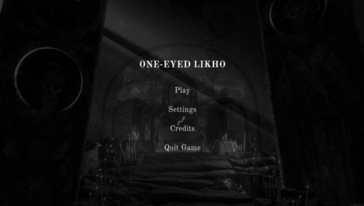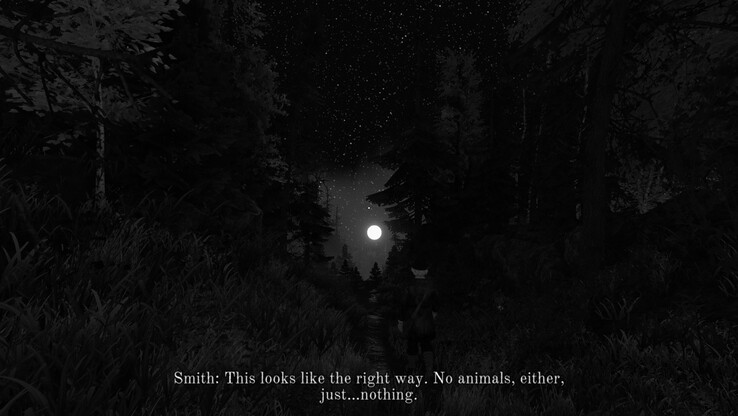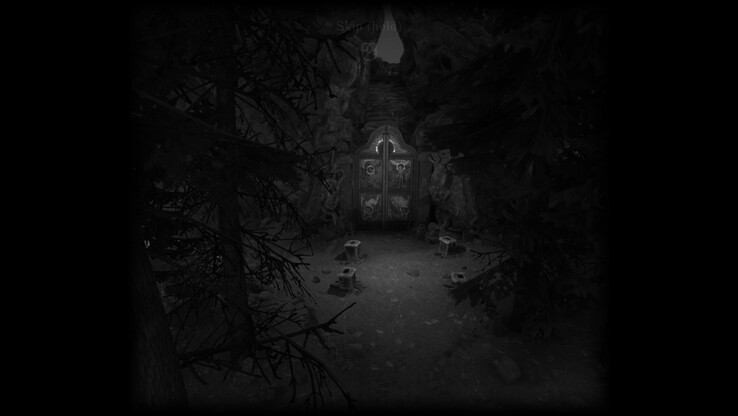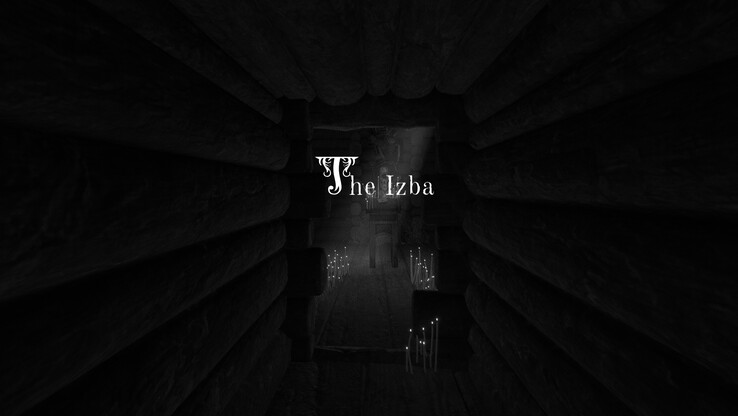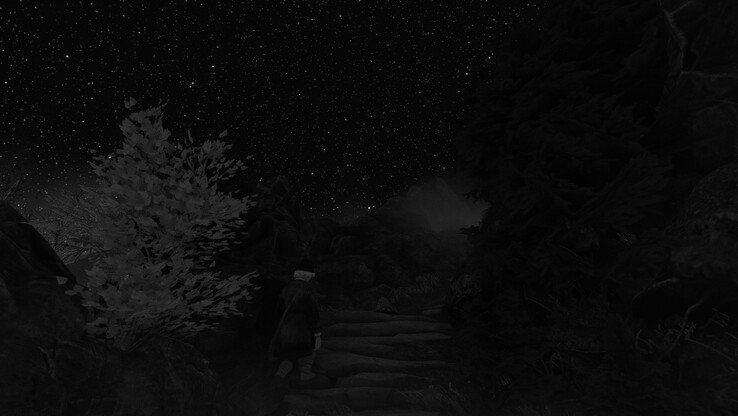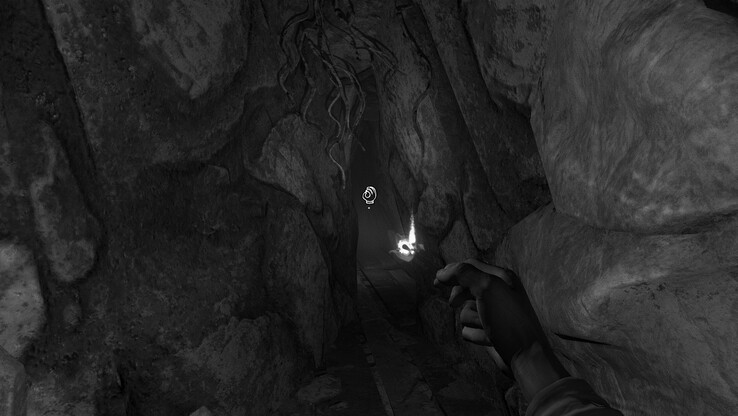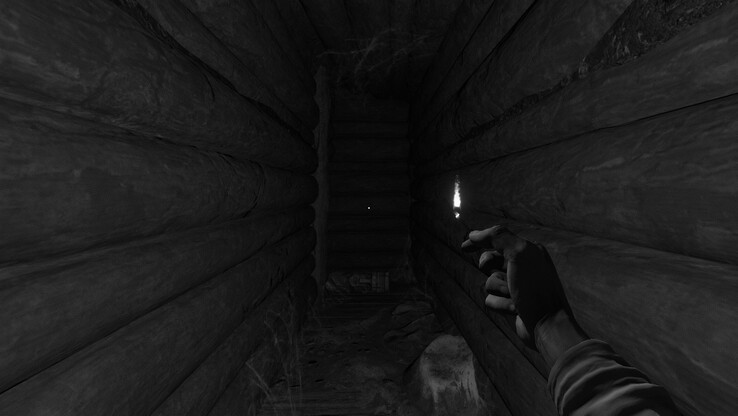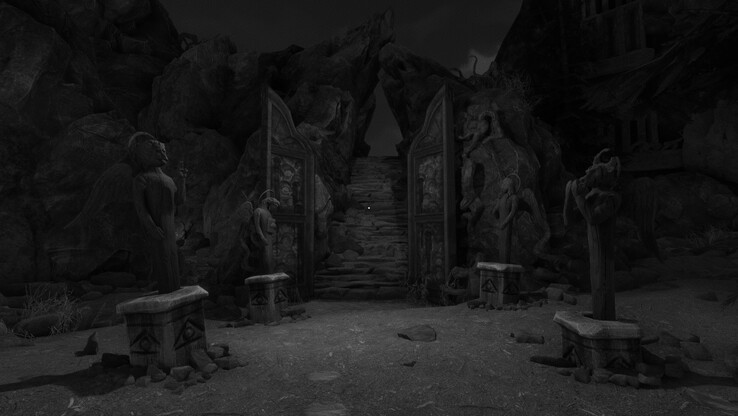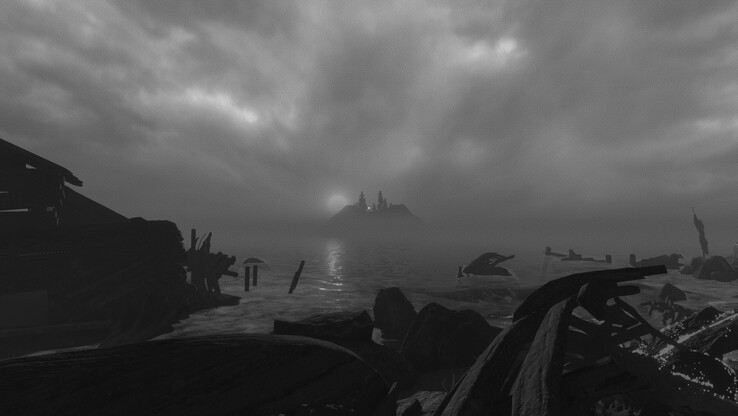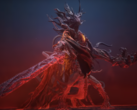A haunting, mesmeric folk horror experience with minor caveats: One-Eyed Likho - First impressions
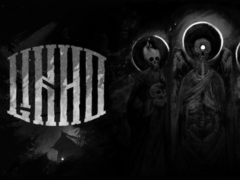
I'm not a big fan of horror games in general. However, one upcoming game had my attention since it was announced last year. With a review key in hand, I played through the first few hours of the full release of One-Eyed Likho, approaching it as someone somewhat experienced in traditional horror gaming (Outlast, Phasmophobia) but entirely new to the folk horror subgenre. My expectations were largely shaped by the haunting monochrome visuals in teasers and the promise of a narrative steeped in Eastern European legend. For reference, I ran the game on a Ryzen 7 5800X CPU, RTX 3060 Ti GPU, 64GB RAM (3200MHz), and Windows 11.
On maximum graphics settings at 2560×1440 resolution (see below), One-Eyed Likho ran pretty smoothly with no crashes or notable bugs. The game isn’t graphically demanding by today’s standards, and held steady throughout. However, some animation and character movement - particularly when navigating uneven terrain or ascending stairs - felt slightly janky. Polished enough for immersive play, but a few rough edges were still noticeable.
Also, there's a demo available for One Eyed-Likho on Steam, if you want to try the game out before you spend money on it.
The first thing that hit me was the monochrome palette - an aesthetic choice that’s very striking and central to the game’s identity. Environment art transforms familiar locales - pine forests beneath starlit skies, derelict chapels, ruined ferry docks - into scenes that feel equal parts mythical and foreboding. Every shadow is deep, and every light source looks precious. The washed out blacks and greys work just as well as inky blacks in some other horror games, if not better.
Environmental range
- Forest expanse: Moving through the opening woods is very atmospheric and meditative. There’s a genuinely staggering sense of scale and isolation; moonlight trickles between dense pine canopies, punctuated by cinematic title cards (The Mysterious Forest, The Ferry) that mark chapter progression. I felt that the lack of wildlife (except the occasional raven), consistently called out both visually and in dialogue, adds a fair amount of weight to the supernatural tension.
- Built environments: The atmosphere quickly shifts as you enter cabins or religious ruins - spaces overrun with cobwebs, flickering with candlelight, and choked by centuries of rot. Even ordinary objects, such as pews or icons, seem ominous when cast in faded light or surrounded by decrepitude.
- Grave sites & shrines: Later images showcase spaces resembling crypts, altars, and freshly dug graves - destinations that blend the sacred with folk horror motifs. Religious murals border on the grotesque, reinforcing a sense of corrupted history and blurring lines between the spiritual and the profane.
- Structural ruin: Some segments, for instance, "The Ferry" section introduces rocky shores and the vestiges of river crossing - ruins, shattered boats, rain-slicked stone, which lends the journey a sense of constant, anxious movement - something I really appreciated as I kept playing the game.
In nearly every scene, One-Eyed Likho leverages visual minimalism to draw the eye to environmental storytelling. The lack of on-screen clutter meant that my attention was always on context clues: lighting, debris, and architecture all became part of the narrative.
Audio, which is a huge half of the immersion equation - is handled with equal care. Sparse, sometimes abrasive Russian dialogue, environmental ambiance, and intermittent folk talk are very well utilized. In my opinion, silence is almost weaponized in One-Eyed Likho, making every creak and rustle unsettling - much like any other horror title.
Jump scares are rare but well-executed, timed to story moments rather than cheap player manipulation. Slowly building tension (rather than constant threat) is the rule. Whether it’s the wind in the trees (which sounds great, by the way) or the raven's calls echoing off stone walls, the game uses its audio very aptly as a tool for dread and world-building.
Gameplay loop
The core experience of One-Eyed Likho centers around exploration, with scattered puzzles along the way. There’s no combat (at least in the first few hours of the game) - the focus is on navigating and interpreting mysterious locations. Controls are simple and familiar, very reminiscent of classic first-person adventure games, and never intrusive.
One of the biggest highlights is the unlimited matchstick mechanic. Matches can light your path, trigger the ignition of dry brush, or reveal hints in the darkness. Yet each match quickly fizzles out, forcing periods where you have to wait for a couple of seconds enveloped in complete darkness. This not only increases tension, but thematically reinforces the fragility of knowledge and safety, which is also in line with the game’s Slavic folklore motif. The usage of matchsticks was easily one of the more distinctive and effective design choices, similar to the night vision camera recording mechanic in Outlast.
Speaking of puzzles, they are simple, mainly environmental, and rarely halt forward momentum or narrative pacing. Many early puzzle sequences act as conduits for story exploration, rather than as standalone challenges. Some may take issue with this lack of difficulty, but I felt it strengthened immersion rather than interrupting it.
Narrative structure and storytelling
The game’s strongest suit is its storytelling, rooted in Slavic myth. The protagonist, Smith, has an interesting motivation - he seeks out evil and misfortune solely because he hasn’t experienced them. It’s a pretty odd, yet compelling premise that situates the player at odds with both natural and supernatural threats.
Dialogue is okay - crisp, but nothing special. The voice acting is what stands out more - it brings raw, gritty energy to the narration. The interaction with your companion (the tailor) in the early stages of the game is kind of effective in creating emotional texture - though some animation glitches, as with the tailor’s shoes not aligning with stairs as he walks up, will remind you this is a mid-budget production at best.
Branching choices emerge more clearly via dialogue, though early decisions felt quite inconsequential. Whether they become more meaningful later remains to be seen; this is one area where I felt there’s untapped potential.
Personal highlights
Visuals: The interplay of darkness and light, particularly in scenes like the ruined chapel awash in candlelight, is very unsettling, but still beautiful. Some visuals - such as star-filled night skies or abandoned graveyards - do a great job of bringing the grotesque together with the sublime.
Atmosphere: Always oppressive, often breathtaking. Even in scenes of quiet, the sense of danger is always there.
Scares: Build-up is prioritized over jump scares. When scares do occur, they land because they’re narratively motivated and tied to environmental change, not just sudden noise (although the statues moving closer to you before you enter the coffin was a welcome exception).
Polish: General performance is strong, but polish issues are visible - clipping, slightly stiff animation, and UI quirks in dialogue selection detract a little from the whole experience. To be fair, they seldom "break" the experience, but it is still noteworthy for prospective players.
Closing statements
One-Eyed Likho is a relatively meditative and art-forward entry in the horror genre. Solely off first impressions, it succeeds in areas where atmosphere, visual storytelling, and folk mythology take precedence over constant action or challenge. It should be great for fans of the genre who would like to try out a refreshing experience - one that finds beauty in its darkness, even if its rough edges and occasionally shallow choices hold it back from greatness.
While One-Eyed Likho does share basic horror DNA with games like Outlast, it makes a niche for itself through its folk horror foundation and great art direction over pure terror. Rather, a better comparison may actually be Return of the Obra Dinn or experimental narrative horrors, not the survival style of more mainstream games. The focus is on exploring a storyline and a world - one as beautiful as it is menacing - rather than simply surviving it. And that is perhaps One-Eyed Likho's biggest strength.
Source(s)
Steam, Own





